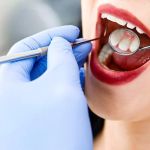- 1-understanding-gum-inflammation-from-braces
- 2-common-causes-of-inflamed-gums-with-braces
- 3-daily-oral-hygiene-tips-to-prevent-inflammation
- 4-home-remedies-and-over-the-counter-options
- 5-when-to-see-a-dentist-for-braces-related-gum-issues
- 6-real-patient-experience-and-successful-management
1. Understanding Gum Inflammation from Braces
Inflamed gums during orthodontic treatment are a common concern. Braces can make maintaining optimal oral hygiene challenging, leading to plaque buildup and irritation. This inflammation, medically referred to as gingivitis, causes redness, swelling, and tenderness of the gum tissue around the brackets and wires. Recognizing the early signs of inflamed gums is crucial to prevent progression to more serious periodontal issues during your braces journey.
Inflamed gums not only cause discomfort but can also slow down orthodontic treatment progress. The body’s immune response to bacterial buildup increases blood flow to the area, which leads to the swelling and tenderness patients often describe. Patients often notice that inflammation worsens if oral care is inconsistent or difficult due to the braces hardware.
2. Common Causes of Inflamed Gums with Braces
The primary cause of inflamed gums in patients with braces is plaque accumulation. Brackets, wires, and bands create additional surfaces where food debris and bacteria can cling, making thorough cleaning more complicated. Over time, this plaque irritates the gum tissue.
Other contributing factors include improper brushing techniques, missed flossing due to difficulty accessing tight spaces, and consumption of sugary or acidic foods that exacerbate bacterial growth. Additionally, some patients experience allergic reactions to orthodontic materials or trauma from wire pokes, which may intensify gum irritation.
3. Daily Oral Hygiene Tips to Prevent Inflammation
Effective prevention of inflamed gums with braces hinges on meticulous oral hygiene. Using a soft-bristled toothbrush or an orthodontic toothbrush designed for braces helps clean around brackets and wires gently yet thoroughly. Patients should brush at least twice daily, ideally after meals, to remove trapped food particles.
Flossing remains essential despite the challenge posed by braces. Specialized floss threaders or interdental brushes make reaching between teeth possible. Mouth rinses containing antimicrobial agents can reduce bacteria and soothe gum tissue. Remembering to clean the tongue and rinsing with water throughout the day also contributes to overall oral health.
4. Home Remedies and Over-the-Counter Options
Several home remedies can help soothe inflamed gums. Rinsing with warm salt water reduces bacterial presence and promotes healing. Applying a cold compress to the outside of the mouth alleviates swelling and discomfort.
Over-the-counter oral gels with anti-inflammatory properties, such as those containing benzocaine or aloe vera, provide localized relief. However, these should be used cautiously and under professional guidance to avoid masking symptoms that require dental attention.
5. When to See a Dentist for Braces-Related Gum Issues
If gum inflammation persists beyond a few days, worsens, or is accompanied by bleeding, severe pain, or recession, professional evaluation is essential. Dentists or orthodontists can provide deep cleanings, adjust braces to reduce irritation, and prescribe medicated rinses or treatments tailored to the severity of inflammation.
Ignoring symptoms can lead to periodontitis, a more serious infection that threatens the stability of teeth and orthodontic results. Early intervention ensures successful treatment and keeps your smile on track.
6. Real Patient Experience and Successful Management
Jessica, a 16-year-old high school student from Texas, struggled with inflamed gums shortly after getting braces. By following her orthodontist’s recommendations for improved brushing techniques, using interdental brushes, and rinsing with salt water, she noticed significant improvement within weeks. Her experience highlights the importance of dedication to oral hygiene and open communication with dental professionals.
Jessica’s story is a common one, demonstrating that with proper care and support, patients can manage inflammation effectively and enjoy the benefits of a healthy, straight smile.
For tailored advice and products designed to help treat inflamed gums from braces, visit Dentistry Toothtruth. Their expert recommendations and resources support patients in achieving optimal oral health throughout orthodontic treatment.







 Shine Orthodontics and Pediatric Dentistry4.0 (858 review)
Shine Orthodontics and Pediatric Dentistry4.0 (858 review) Dr. Rosemary Villa4.0 (34 review)
Dr. Rosemary Villa4.0 (34 review) Gilbert Vista Dental4.0 (55 review)
Gilbert Vista Dental4.0 (55 review) Motto Clear Aligners0.0 (0 review)
Motto Clear Aligners0.0 (0 review) Brandon L. Cairo, DMD, PC5.0 (103 review)
Brandon L. Cairo, DMD, PC5.0 (103 review) Open Door Family Medical Center- Sleepy Hollow4.0 (215 review)
Open Door Family Medical Center- Sleepy Hollow4.0 (215 review) The Importance of Oral Health Education During Pregnancy for a Healthy Pregnancy
The Importance of Oral Health Education During Pregnancy for a Healthy Pregnancy Best Tips for Brushing Your Teeth Properly for Healthy Gums: Essential Techniques for Oral Health
Best Tips for Brushing Your Teeth Properly for Healthy Gums: Essential Techniques for Oral Health Why Skipping Dental Checkups Can Lead to Bigger Oral Health Problems
Why Skipping Dental Checkups Can Lead to Bigger Oral Health Problems Advantages of Porcelain Dental Restorations
Advantages of Porcelain Dental Restorations How Can Diabetes Cause Tooth and Gum Problems? Preventing and Managing Oral Health Issues
How Can Diabetes Cause Tooth and Gum Problems? Preventing and Managing Oral Health Issues Healthy Habits for Promoting Good Oral Health and Hygiene: Tips for a Healthy Smile
Healthy Habits for Promoting Good Oral Health and Hygiene: Tips for a Healthy Smile